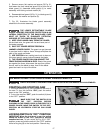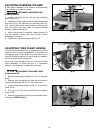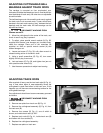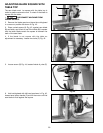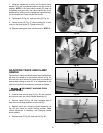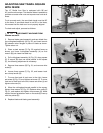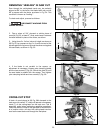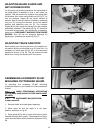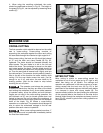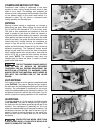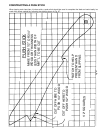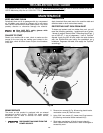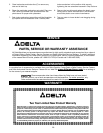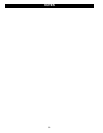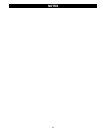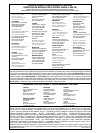
25
CROSS-CUTTING
The first operation which should be learned on the radial
saw is cross-cutting. Cross-cutting consists of
supporting the workpiece against the fence and pulling
the saw blade through the material at right angles to it.
When cross-cutting, the track arm (A) should be indexed
at “0” and the track arm clamp handle (B) Fig. 62,
tightened. The fence should be clamped between the
table boards. The saw blade is to be to the left and
behind the fence. The workpiece is placed on the table
and butted against the fence. The saw blade should be
clear of the fence and table when the machine is turned
on. Then the saw blade is lowered until it lightly cuts into
the table surface. The operator should position himself a
little to the left of the machine for better visibility while
cutting. Pull the saw blade across the work, just far
enough to cut it off, and return the saw blade to its
starting position. Wait for the blade to stop before
touching the cut off piece.
The operator must always be conscious
of where his hands are; that they are clear of the blade
and holding the workpiece firmly. As an added measure
of operator safety, since the splitter and anti-kickback
fingers are not used in the cross-cutting operation, the
anti-kickback rod (C) can be turned upside down and
locked in place so the rod just clears the workpiece. In
this position the rod can act as a guard from the exposed
teeth of the blade. Fig. 62 shows a cross-cutting
operation on a radial saw. The operator should always be
sure to return the cutterhead carriage to the full rear
position after each cross-cut operation.
When cross-cutting material more than 1”
thick, the fence must be positioned immediately behind
the fixed front table board.
Fig. 61
Fig. 62
MITER CUTTING
Miter cutting is similar to cross-cutting except the
workpiece is cut off at an angle (up to 45° right or left)
rather than being cut off square. The settings and
operation are performed in the same manner as cross-
cutting except that the track arm (A) Fig. 63, is first
positioned to the desired angle on the miter scale before
it is clamped in place with clamp handle (B). The
operator should position the hand holding the workpiece
on the opposite side to the direction of the miter so the
blade is pulled through the workpiece and away from the
hand. Fig. 63, shows a typical miter cutting operation on
the radial saw.
C
C
A
B
C
4. When using the moulding cutterhead, the motor
should be positioned as shown in Fig. 61. The height of
the guard (A) Fig. 61, can be adjusted by loosening three
screws (C).
MACHINE USE



